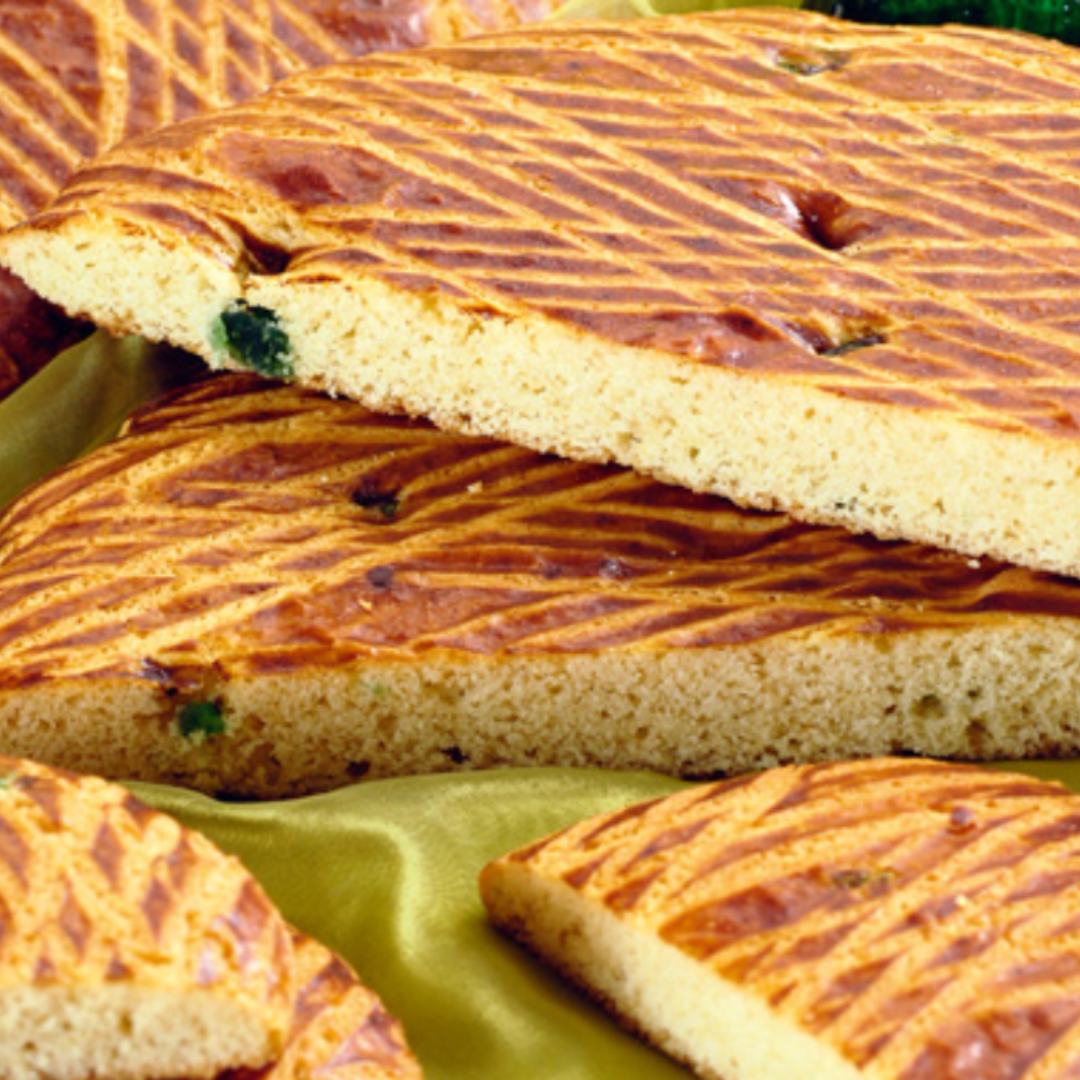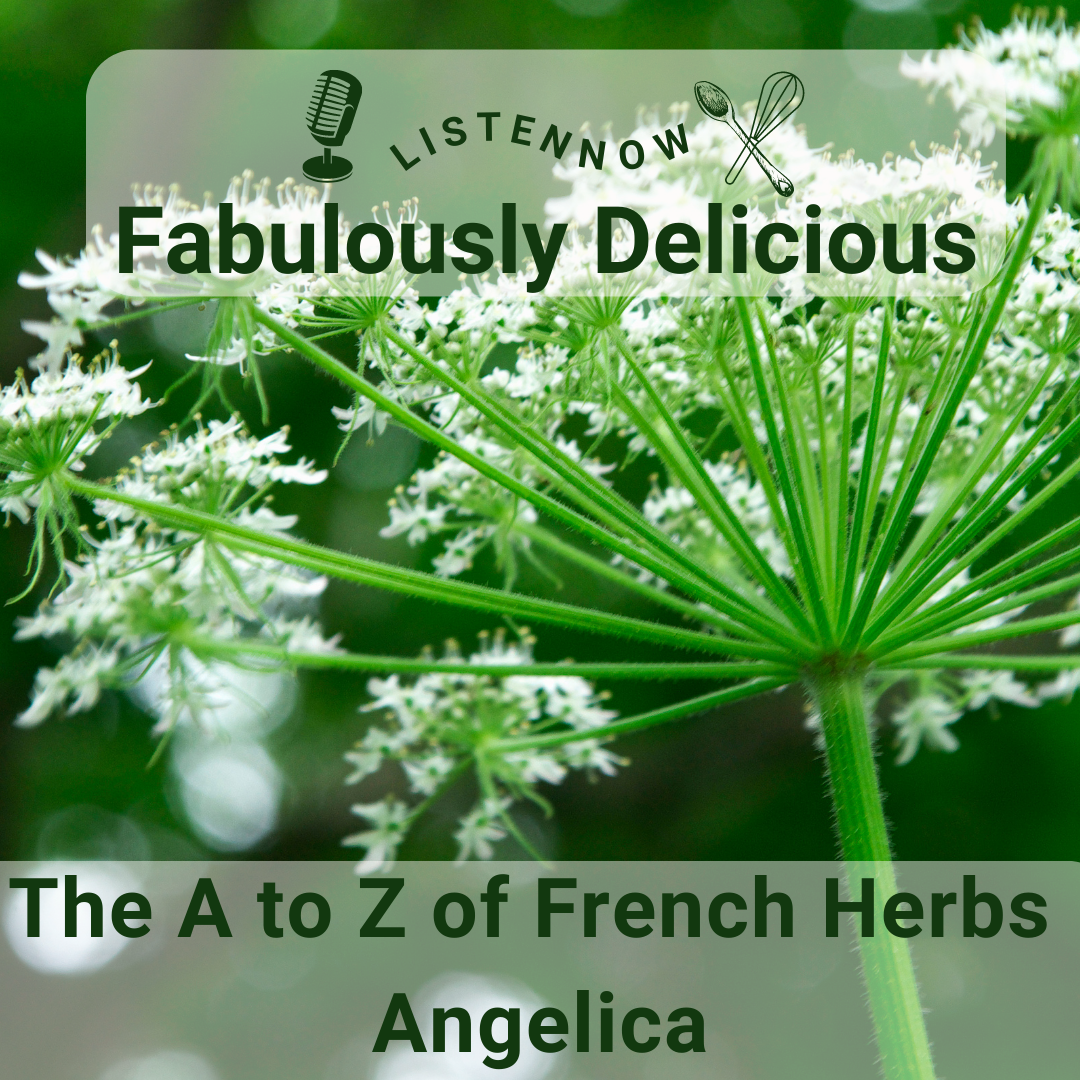French Recipes, Podcast Episodes and France Travel Tips!

Candied Angelica
One of the most popular commercial uses of Angelica and cooking is to confiture Angelica to be used as a confectionery. This process consists of cutting the stems of the Angelica and then peeling them before they are then lacerated in the syrup.
Doing this on more than one occasion increasingly super concentrates it, so that the water naturally in the stems is replaced through these baths in an osmosis effect with the syrup.
The candied strips are then dried at a low temperature to obtain a green candied stem. That has a smooth texture and a delicious fragrance. This candied Angelica has a unique, subtle citrus flavor.
If you have any homegrown Angelica stems and you want to make your own candied Angelica sticks, here's a recipe for you.

Galette Charentaise Recipe
The most popular dish in France probably to make with candied Angelica is the Galette Charentaise. It's a really easy cake to make. Despite the name, it's a cake, not a galette.
What is a Galette Charentaise? It’s a cake but it’s a biscuit as well. Traditionally it's round and measures around 25 centimeters and is a very simple recipe, but it's very, very local. You can find the galette Charentaise almost entirely on the west coast of France.
Here’s a recipe taught to me by Elise Botiveau for a Galette Charentaise.

A to Z of French Herbs - Angelica
Angelica is considered a vegetable rather than a herb in some countries in Europe. But in France, it's considered to be a herb. It's used in a variety of ways. The candied Angelica is probably the most well-known and used.
In the first season of my podcast Fabulously Delicious The French Food podcast I spoke with Elise Botiveau about the Galette Charentaise, which is a cake that Elise grew up making. This cake or gateau as they like to call them here in France and has a special ingredient, Angelica, candied Angelica to be exact. So what is Angelica
Angelica is an aromatic herb that grows one to two meters high, sometimes even higher. Its leaves have hairs on the underside and the plant has white or greenish flowers depending on the variety. It tastes a bit like celery. In Finland actually, where it's treated like a vegetable. The stems are often eaten raw like celery. Stems can also be added to an assortment of other vegetables being roasted or as a herb in salads and soups.

